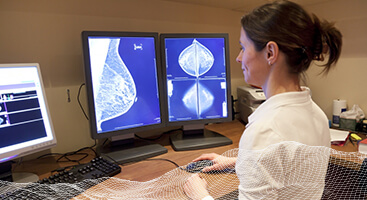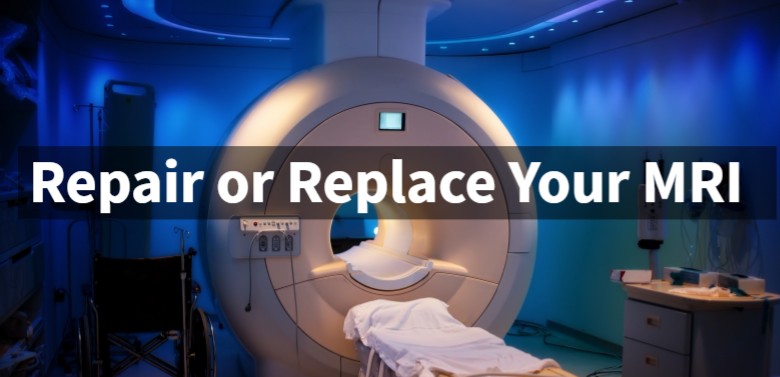MEDICAL IMAGING SPECIALISTS

3D Mammography FAQs
Once upon a time, a bout of the flu could almost certainly kill you. If you were injured, there’s a good chance that amputation would be the only option — and, of course, there would be no anesthesia to help the pain. We didn’t have words like “chemotherapy” and “heart transplant,” and we certainly didn’t have words like “X-ray” and “MRI.”
If there’s anything to be taken from our history, it’s that medical advancements continue to shape the way that we view modern medicine. When we have new developments and new types of medical imaging equipment, we are able to diagnose patients better and more efficiently, and provide the necessary treatment faster.
Bravo Imaging is proud to announce that we now offer service, repair, and machinery for Fujifilm 3D Mammography. This can provide digital breast tomosynthesis (sometimes referred to as 3D mammography), and the benefits of this technology will help your patients, technicians, and doctors alike. We’re sure that many are curious about this type of medical imaging equipment, which is why we’re happy to provide answers to some frequently asked questions about 3D mammography. Stay tuned to learn more, and contact Bravo Imaging for service, repair, and replacements for all your imaging technology!
What is mammography…
While this information might seem like old news for doctors, nurses, and everyone else in the medical field, it’s still important to start with the basics. Mammography is a way of using X-rays to diagnose and locate tumors, specifically those located in the breasts.
… and why is it important?
As a quick aside, breast cancer is one of the most common forms of cancer to occur, particularly in women. In fact, breast cancer is the second most deadly form of cancer in the United States (second only to lung cancer). One in 8 women are projected to develop breast cancer in their lifetime, though it should be noted that rates of breast cancer are even higher for African American women.
However, the death rate from breast cancer has been reduced over the past 20 years. It is still a serious and often life-threatening disease, but the proper technology can help diagnose breast cancer more effectively. This, in turn, leads to a faster prognosis and treatment plan, two things that are essential for saving lives.
How does 3D mammography work?
As defined by breastcancer.org, “Three-dimensional mammography (also called digital breast tomosynthesis, digital tomosynthesis, or just tomosynthesis) creates a three-dimensional picture of the breast using X-rays.” In their article on 3D mammography, they go onto explain that multiple images, at a low dosage of radiation, are taken at different angles around the breast. This, in turn, creates a 3D picture.
How does this differ from traditional mammography?
What had been considered the standard for mammograms had ruled the medical imaging equipment world for decades, and produced a two-dimensional image of the breast (also used to diagnose and locate tumors). In a 2D mammogram, an X-ray machine lowers down onto a woman’s breast and presses it between two plates. A low dosage of radiation takes images, and provides a 2D image of the breasts.
What’s wrong with 2D mammograms?
Nothing is “wrong,” per se, but 3D mammograms do promise to give better results, as well as be less painful. Many women report that a 2D mammogram is fairly painful, though many medical professionals state that this is due to a number of factors, such as when in your menstrual cycle you get a mammogram, as well as the skill of the technician.
Three-dimensional mammograms have been spoken of as either not being painful, or at the very least, being less painful than a 2D mammogram. This is crucial, not only for the patient’s comfort, but because of the stigma surrounding a mammogram. If an invaluable diagnostic tool is thought of as causing pain, less people will be inclined to get checked out, which can result in breast cancer going untreated.
Does this only affect women?
No! For starters, when we think of the number of women we know in our lives, that aforementioned “1 in 8” statistic means that we will know someone that is affected by breast cancer. Breast cancer has taken the lives of millions of Americans, but with the proper medical imaging equipment, this number can be reduced.
Additionally, breast cancer does not only affect women — while the numbers are fairly low, a man has about a 1 in 1000 chance of developing breast cancer.
Are 3D mammograms better?
This type of three-dimensional technology is still relatively new, but the findings thus far have been immensely promising. In fact, breastcancer.org noted that “Several studies have found that 3-D mammograms find more cancers than traditional 2-D mammograms and also reduce the number of false positives.” Additionally, 3D mammograms are shown to be more effective over time.
Should my clinic make the switch to a 3D mammogram?
Considering that it has a higher efficacy rate, is thought to be less painful, has better rates over time, and is able to diagnose more types of breast cancer and cancerous tumors, going with a 3D mammogram for your clinic, imaging center, or hospital is absolutely a good call. While this might not be a switch in medical imaging technology that needs to happen immediately, it’s important to note that this could be technology that saves more lives, which is exactly why we’re all in the business of medicine in the first place.
When you are ready to make the switch for your medical center, know that Bravo Imaging can help supply you with up-to-date mammography technology and medical imaging equipment that can make a difference. We are currently offering the Fujifilm 3D Mammography option for clinics and hospitals in the South Florida area, and would be happy to consult with you about installation. If you’re not ready to upgrade just yet, we understand, and can offer service, maintenance, and repairs for your existing technology. Contact us today to learn more, and get the best in medical imaging equipment from Bravo Imaging!
